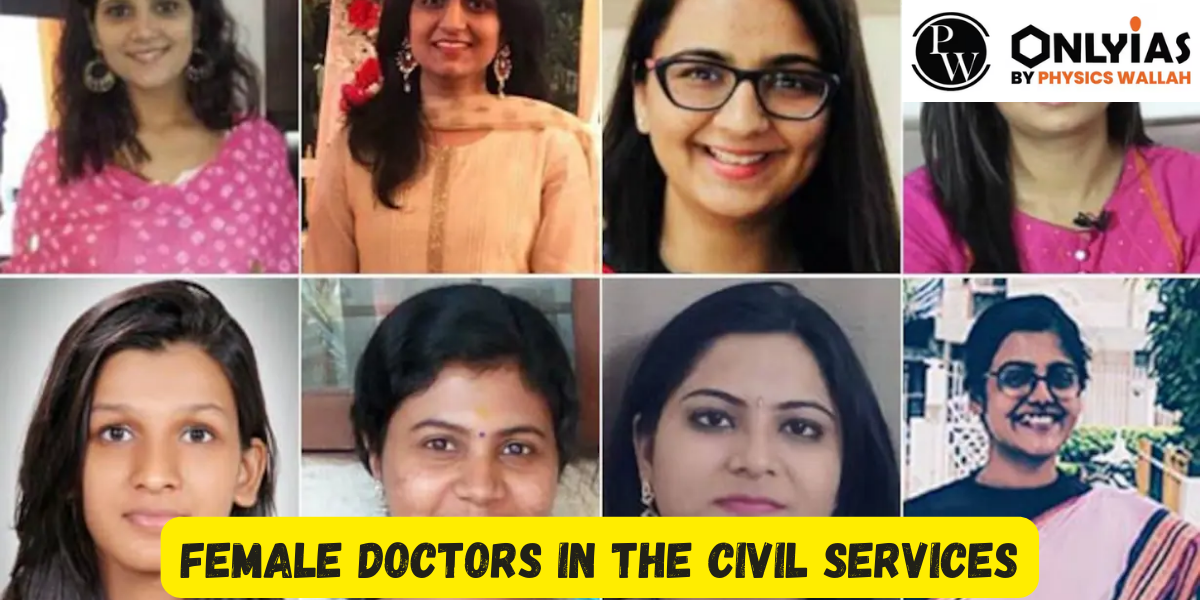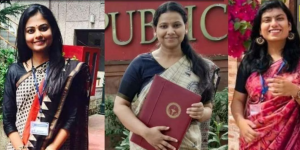Explore success stories of female doctors who cracked UPSC for a career in civil service.

Female doctors IAS Officers: The journey to becoming an IAS officer is no small feat. It demands unwavering dedication, meticulous preparation, and a steadfast commitment to public service. In recent years, an increasing number of female doctors have risen to this challenge, breaking stereotypes and excelling in both medical and administrative domains. This article shines a spotlight on the remarkable achievements of these empowered healers who transformed themselves into IAS officers through their hard work and determination.

The Civil Services Examination (CSE) conducted by the Union Public Service Commission (UPSC) is known for its rigorous selection process. It requires candidates to excel not only in general studies but also in their optional subjects, essays, and interviews. Female doctors have consistently shown that their medical backgrounds, characterized by empathy, dedication, and analytical skills, can be seamlessly integrated into administrative roles.
Dr. Shena Aggarwal:
Dr. Shena Aggarwal’s success story serves as an inspiration for many aspiring female doctors. In 2011, she secured the All India Rank of 1, making her the topper of that year’s UPSC CSE. Dr. Aggarwal, an MBBS graduate from AIIMS, exemplified that medical knowledge coupled with administrative acumen can lead to unparalleled success. Her achievement not only shattered glass ceilings but also paved the way for more female doctors to aspire for administrative roles.
Dr. Sweta Mohanty:
Another shining example is Dr. Sweta Mohanty, who cleared the UPSC CSE in 2018 securing an impressive rank. Dr. Mohanty, an MBBS graduate from Maulana Azad Medical College, demonstrated that women can excel in both medical practice and administrative leadership. Her story highlights the remarkable ability of female doctors to balance their medical profession with the responsibilities of an IAS officer.
Dr. Bharti Dixit:
Dr. Bharti Dixit’s journey from a medical practitioner to an IAS officer is yet another testament to the resilience of female doctors. With an MBBS degree from Safdarjung Hospital, Dr. Dixit proved that her medical background was not a limitation but a valuable asset. Her determination to make a broader impact led her to the civil services, where she now plays a pivotal role in shaping administrative policies.
Dr. Seema Rao
Dr. Seema Rao, a doctor and a martial artist, cracked the UPSC CSE and secured the 249th rank. Her unique blend of medical expertise and self-defense skills showcases a different dimension of contributions to public service.
Dr. Shena Aggarwal
Dr. Shena Aggarwal, a medical doctor, secured the 1st rank in the UPSC CSE in 2011. Her achievement as the topper exemplifies the potential of combining medical knowledge with administrative skills.
Dr. Varsha Sharma
Dr. Varsha Sharma, a dentist, secured the 392nd rank in the UPSC CSE. Her journey highlights the diverse avenues that medical professionals can explore to make a positive impact.
Dr. Artika Shukla
Dr. Artika Shukla, a medical doctor, cracked the UPSC CSE in 2015 and secured the 4th rank. Her accomplishment highlights the potential of medical professionals to excel in administrative roles.
The inclusion of female doctors in the IAS cadre brings a unique perspective to policy-making and governance. Their medical expertise, coupled with administrative insights, enables them to contribute effectively to healthcare policies, women’s empowerment, and social development. These women exemplify the ability to initiate meaningful change from within the system.

While the success stories of female doctor-officers are inspiring, it’s important to acknowledge the challenges they often face. Breaking through traditional gender roles and stereotypes requires not only exceptional merit but also resilience against biases. Female doctors aspiring to be IAS officers often find themselves at the intersection of two male-dominated fields, demanding perseverance and determination.
The increasing number of female doctors joining the ranks of IAS officers is a positive sign of progress and empowerment. It reflects the evolving landscape of gender equality and the expanding horizons for women in professional spheres. These empowered healers continue to redefine success, demonstrating that being a doctor is not just about treating patients but also about healing society through administrative leadership. As they navigate their dual roles as medical practitioners and public administrators, their journey becomes an inspiring narrative of dedication and empowerment.

Arun Thamburaj, a native of Tamil Nadu, abandoned his medical profession and embarked on a path to become an IAS officer. He successfully cleared the UPSC CSE examination in 2010 and secured the 6th All India Rank (AIR) in the CSE 2012 on his second try. Presently, Thamburaj holds the position of the collector in Tamil Nadu's Cuddalore district.
The inspiring story of Dr. Nitin Shakya's path to becoming an IAS officer is a tale of overcoming numerous setbacks and challenges. Discover the remarkable journey of a young man who, despite being prevented from taking his Class 12 exam, managed to become a medical doctor and eventually conquer the UPSC exam.
Following the completion of his MBBS degree, the youthful Roman Saini spent six months working at the National Drug Dependence Treatment Centre (NDDTC) located at AIIMS. At the age of 22, Saini undertook another formidable endeavor and successfully conquered the UPSC Civil Services Examination (CSE). He went on to serve as a district collector in Madhya Pradesh.

<div class="new-fform">
</div>